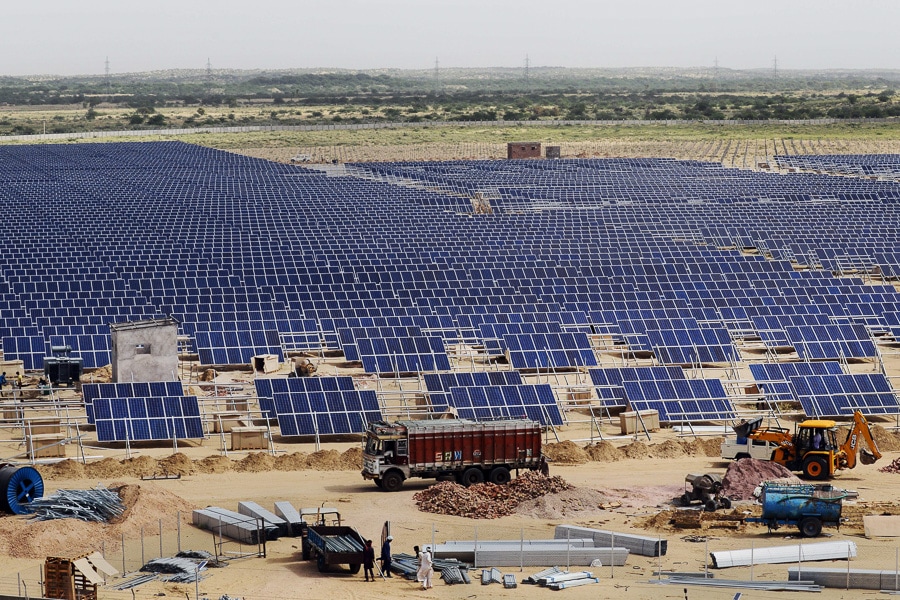
Greening deserts: India powers renewable energy ambitions with solar push
The arid state of Rajasthan sees 325 sunny days each year, making it perfectly placed for the solar power revolution
 The arid state of Rajasthan, where Bhadla Park takes up an area almost the size of San Marino, sees 325 sunny days each year, making it perfectly placed for the solar power revolution, officials say. Image by Money Sharma/AFP via Getty Images
The arid state of Rajasthan, where Bhadla Park takes up an area almost the size of San Marino, sees 325 sunny days each year, making it perfectly placed for the solar power revolution, officials say. Image by Money Sharma/AFP via Getty Images
As camels munch on the fringes of Thar desert, an oasis of blue solar panels stretches further than the eye can see at Bhadla Park—a cornerstone of India's bid to become a clean energy powerhouse. Currently, coal powers 70 percent of the nation's electricity generation, but Indian Prime Minister Narendra Modi has pledged that by 2030, India will produce more energy through solar and other renewables than its entire grid now.
"First, India will increase its non-fossil energy capacity to 500 gigawatts... Second, by 2030, 50 percent of our energy requirements will come from renewable resources," Modi told the COP26 climate summit in Glasgow.
The arid state of Rajasthan, where Bhadla Park takes up an area almost the size of San Marino, sees 325 sunny days each year, making it perfectly placed for the solar power revolution, officials say.
Once an expanse of desert, authorities have capitalised on the sparsely populated area, claiming minimal displacement of local communities. Today robots clean dust and sand off an estimated 10 million solar panels, while a few hundred humans monitor.
This pursuit of a greener future is fuelled by necessity.







